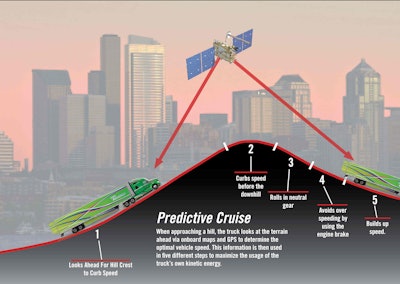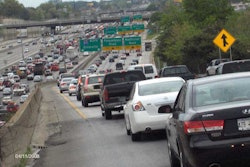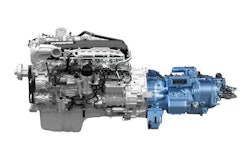 By anticipating the terrain ahead using GPS, Predictive Cruise Control ensures that Paccar engines and the truck’s transmission are in the most efficient operating mode to increase fuel economy.
By anticipating the terrain ahead using GPS, Predictive Cruise Control ensures that Paccar engines and the truck’s transmission are in the most efficient operating mode to increase fuel economy.Early cruise control systems were usually vacuum-controlled setups designed to allow drivers to set a vehicle speed and hold it indefinitely. The systems worked well on flat unvarying terrain and gave drivers a much-needed break from making constant throttle inputs.
But the systems had their limitations: They could hold the throttle at only one position, with no way to adjust automatically for changing terrain. Even worse, fuel economy often took a hit: It was not uncommon for a vehicle climbing a grade in cruise mode to suddenly apply full throttle in a futile effort to maintain the preset speed.
Cruise control has come a long way. Fleets today rely on modern interactive systems that maintain safe following distances and serve as the heart of modern integrated drivetrains, with engines and transmissions communicating and working seamlessly together to deliver the best possible fuel economy at all times.
But even at their best, many of today’s conventional cruise control systems still have a hard time dealing with changing road elevations. The most recent generation of systems rely on real-time sensor inputs, and any throttle adjustments to match upcoming hills and downgrades still have to be made by the driver.
Now, a new generation of predictive cruise control systems use real-time GPS and topographical data to logically and economically tackle any terrain. Daniel Dempsey, systems engineering manager for Cummins On-Highway, says the new systems actually are superior to a human driver.
“Drivers today can generally only see short distances in front of them,” Dempsey says. “They can effectively make speed and throttle adjustments to deal with the conditions in front of them, but they have no way of looking beyond the immediate hill or incline to set the truck up to deal with conditions out of their line of sight.”
Today’s modern systems use an electronic control module to analyze multiple data streams – horsepower, torque, engine rpms, vehicle speed, load and angle of ascent or descent – to calculate the most fuel-efficient throttle setting at all times.
“Many current-generation optimized drivetrains do that as well, but predictive cruise takes things several steps further,” Dempsey says. The system can “see” up to two or three miles ahead and calculate how to deal with conditions that have yet to come into the driver’s line of sight.
When the system is activated, throttle inputs are made just as a driver would do. On upslopes, it will add power to keep the truck in as high a gear as possible for efficient cruising, and on downslopes, it will put the truck into neutral and allow it to use inertia to coast, facilitating the best possible fuel economy. As the downgrade evens out, it gradually will add power.
“The systems are so much smoother and more efficient than anything we’ve ever had before,” says Anthony Gansle, on-highway marketing manager for Peterbilt, which just introduced its new Predictive Cruise Control system (see page 24). Gansle says the payoffs are real: Peterbilt’s new system is yielding a 2 percent fuel economy boost for trucks running in hilly terrain.
The systems also help improve driver safety and lessen fatigue, Dempsey says. “Now, drivers can focus less on managing fuel economy and pay more attention to traffic and other road conditions for a less stressful driving experience,” he says.




![58-Inch Sleeper_3QView(RGB-300dpi)-med[1]](https://img.ccjdigital.com/files/base/randallreilly/all/image/2015/06/ccj.58-Inch-Sleeper_3QViewRGB-300dpi-med1.png?auto=format%2Ccompress&fit=crop&h=167&q=70&w=250)






